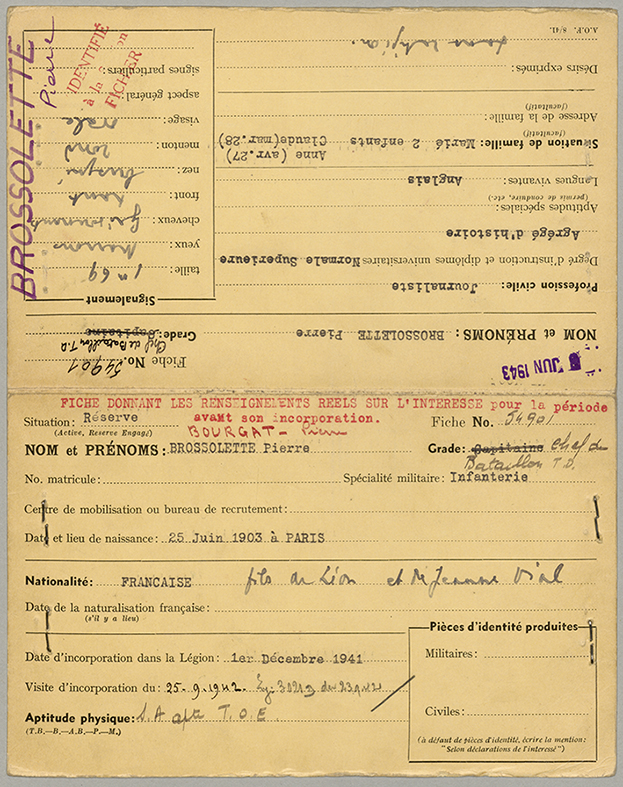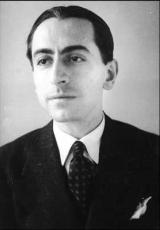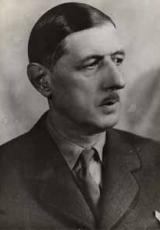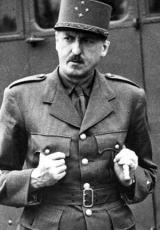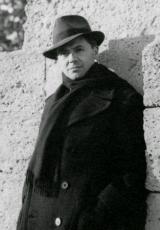Occupied France. The BCRA : Londres › Alger › Paris
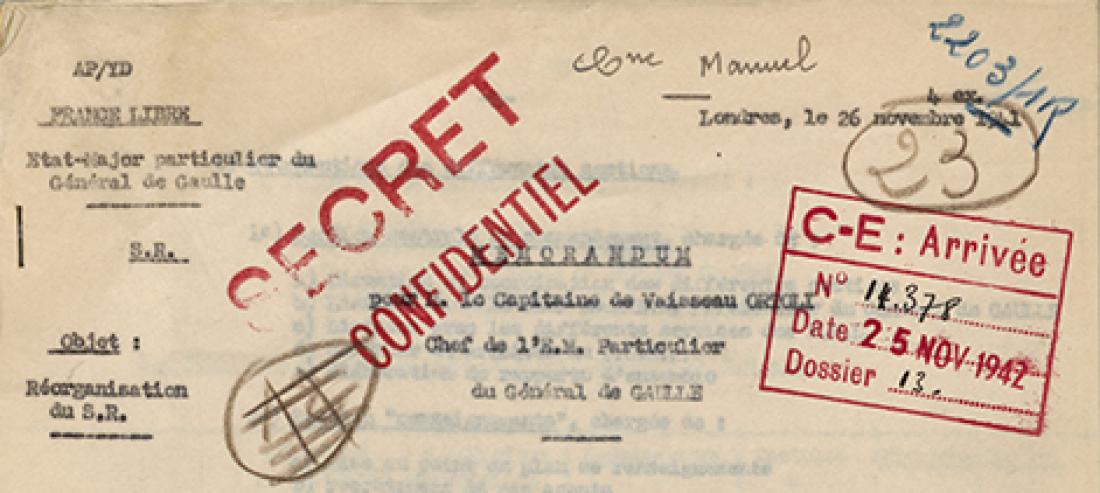
The special services of Free France, which have gone down in history under the name of the Bureau central de renseignements et d'action (BCRA, Central Bureau of Intelligence and Operations), were founded in London on 1 July 1940. However, many months would pass before Colonel Passy's services were fully operational. They gradually widened the scope of their operations and learned to work with the British.
”The BCRA,” wrote its founder in 1947, ”was a spontaneous creation which, persevering in its exceptional state of being, succeeded in recreating itself continuously, adapting ceaselessly to exceptional circumstances that changed and intensified every day. A dwarf in the cradle, it quickly became a giant.”
There were a number of key periods in the history of this dwarf-cum-giant. Autumn 1941 was certainly one of them, as attested by the memo sent on 26 November 1941 by Commander Passy, head of the Free French Service de renseignement (SR, intelligence service), to Captain Ortoli, the chief of General de Gaulle's private staff. The reorganisation of his service bears witness to a strong ambition: concentrating all clandestine activities within a single service in order to place a powerful weapon in the hands of General de Gaulle.
From the 2nd bureau to the SR
The secret services of Free France were born on 1 July 1940 with the appointment of a young graduate of the prestigious Ecole polytechnique, engineering corps captain André Dewavrin (see slideshow), soon to be known by the name of Passy, to head the 2nd bureau of General de Gaulle's staff. Everything had still to be constructed in London, and this 2nd bureau was a de facto intelligence service (SR or service de renseigment) responsible for finding its own intelligence in France. Officially designated the ”Service de Renseignement” in April 1941, it collaborated with the British Secret Intelligence Service, which routed agents across the Channel or through Spain and provided them with means of communicating with London, particularly by radio. Apart from the adoption of the new name in April, the first real change came in June 1941, with the creation of a new section - the Operations section - tasked with working with another British secret service, the Special Operations Executive (SOE), created in July 1940 to provide a link with inhabitants of occupied territories who were determined to carry out subversive operations against the enemy. From summer 1941, the SR thus strove to establish contacts with the groups of resistance fighters that were developing in France.
From the SR to the BCRAM
The situation evolved over the autumn of 1941, leading Passy to suggest an in-depth reorganisation of his service, renaming it the Bureau central de renseignements et d'action militaire (BCRAM, Central Bureau of Intelligence and Military Operations). However, the memo of 26 November quotes the acronym BCRA, ignoring the adjective ”military” (see slideshow).
The first goal was to develop the activity of the Intelligence section, led by Passy's deputy, André Manuel (see slideshow), whose results contributed greatly to the service's credibility in the eyes of the British.
Passy also wanted to expand the Operations section. Jean Moulin, who had arrived in London in October, was waiting to set off back to France to liaise with three major resistance movements in the southern zone. His imminent departure prefigured the development of clandestine military operations. However, it was not until March 1942 that the Operations section was reorganised in depth: an Operations Study and Coordination section (A/EC), soon entrusted to Maurice Duclos (Saint-Jacques), prepared sabotage plans for execution by resistance organisations to support the future landings in France, while a Mission Operations section (A/M), led by Raymond Lagier (Bienvenüe), took charge of operational liaison with the SOE for recruiting and training agents, sending them to France and monitoring their work on the ground. In autumn 1941, Passy also wanted to emphasise escapes (section E) and create a new section dedicated to counter-espionage (CE). There was clearly an urgent need to provide better security for agents and organisations in France against the German and Vichy services of repression. A counter-espionage specialist had just arrived in London: Roger Warin (Wybot) had escaped from France, where he had served in the Vichy counter-espionage services, the Bureau des menées antinationales (Bureau of Anti-National Activities, see Vichy's secret services). He established the CE section and led it until October 1942, with responsibility for interrogating all the Free French volunteers and constructing a huge file of hostile figures and sympathisers in France.
The SR organisation was restructured, first on a temporary basis on 22 December and then permanently on 17 January 1942. The service was renamed BCRAM, with the ”M” emphasising that the bureau now covered all clandestine military activities in France. At the same time, de Gaulle imposed a strict separation from the political missions, whose organisation was now entrusted to the Commissariat national à l'Intérieur (CNI, National Interior Commission).
From BCRAM to BCRA
It took several months for the head of Free France to realise the failure of this organisation: from June 1942, the BCRA - the ”M” disappearing once again - took charge of all clandestine missions in France. In theory, it acted purely as an executive service to carry out the military orders of Colonel Billotte, chief of the private staff, and the political directives of André Philip, appointed to lead the CNI after having been exfiltrated from France. In practice, the BCRA developed its own military plans, which it was then responsible for implementing itself in France, and its primary leaders - Passy, André Manuel and Pierre Brossolette (see slideshow) - played a large part in developing the policy followed in France.
Reorganised on this basis, the BCRA was fairly stable for a year, even though more minor reorganisations took place more or less continuously. In March 1942, the service moved to new premises at 10 Duke Street. Its staff, in London and in France, remained modest in 1942 but then grew strongly: it employed 23 people in London in November 1941, 77 in July 1942, 119 in February 1943 and 421 by the beginning of 1944; section R sent 18 agents to France in 1941, 26 in 1942, 55 in 1943 and 70 in 1944 before the Normandy landings; the Operations section sent between 200 and 250 before the landings, with once again a significant increase in the second half of 1943 and a still greater rise in 1944.
The inevitable merger
In November 1942, when the North African landings took place, the BCRA no longer really had any contacts in this territory, as the Allied services had done their best to exclude it. As well as the rivalry between General de Gaulle and General Giraud, there was the rivalry between their secret services. It is hardly surprising that these services constituted the only channel by which the two pretenders to the leadership of the French war effort kept in touch with the country. The BCRA was very suspicious when officers arrived who had served Vichy and claimed the leadership of clandestine operations by virtue of what they saw as their own technical superiority. Competition raged in France, where the loyalties of certain organisations swung between Generals de Gaulle and Giraud, and in Algiers, where the BCRA established a small outpost in March 1943 led by André Pélabon.
Ultimately, the departure of General de Gaulle, Billotte and Philip, who left London for Algiers at the end of May 1943, and the creation of the Comité français de libération nationale (CFLN, French Committee of National Liberation) shifted the decision-making centre to the Algerian capital. A merger between the secret services was inevitable to ensure the consistency of governmental action in France. It was a slow and painful process, spread out over time and finally decidedly imperfect. After a first attempt in October 1943 under the leadership of General Cochet, the secret services of General Giraud and General de Gaulle were merged in November within a Direction générale des services spéciaux (DGSS, Directorate General of Special Services) led by Jacques Soustelle, a long-standing Gaullist. The presence of Passy, Manuel and Pélabon in key posts showed that the Gaullists retained the upper hand, but in the lower ranks the men from Free France were submerged by a flood of officers from France and North Africa, often serving soldiers, with a very different background.
The end of the BCRA?
Strictly speaking, the BCRA disappeared with the birth of the DGSS. In fact, however, the secret services operating from outside the country were still often referred to by this name. This trend was accentuated by the fact that the two main DGSS bases, in London and Algiers, were baptised BCRAL and BCRAA respectively. Operations in France were still essentially led from London, the BCRA's historic base: this is where communication with the British services and authorities took place, this is where the clandestine transmission centres were based and this is where aircraft left from to take money, staff, instructions and arms to France.
Nevertheless, the BCRA was gradually reduced if not to a smaller size then at least to a status closer to that of an executive body. In the political sphere, Emmanuel d'Astier succeeded Philip at the head of the CNI in November 1943 and did his best to regain some freedom of action, on which the BCRA had considerably encroached, at the cost of strong tensions with Passy. On the military side, as soon as the Normandy landings had taken place, instructions sent to the Resistance no longer came from the secret services but from the staff of the French Forces of the Interior (EMFFI) led by the hero of Bir-Hakeim, General Koenig.
During summer 1944, the London and Algerian staff returned to Paris. But the war was not over: it continued in eastern France and in Germany, as well as in Indochina. The secret services had their part to play. They were soon known under the name of the Direction générale des études et des recherches (DGER, Directorate General of Studies and Research), but for many they remained the BCRA - for some a way of associating the services with the glory days of Free France, for others of linking the criticisms that had afflicted the BCRA during previous years with those levelled at the DGER in turn.
Sébastien Albertelli
Teacher and doctor of history
FOR MORE INFORMATION
The BCRA archives are classified into a number of sub-series (GR 28 P 2, GR 28 P 4, GR 28 P 5).
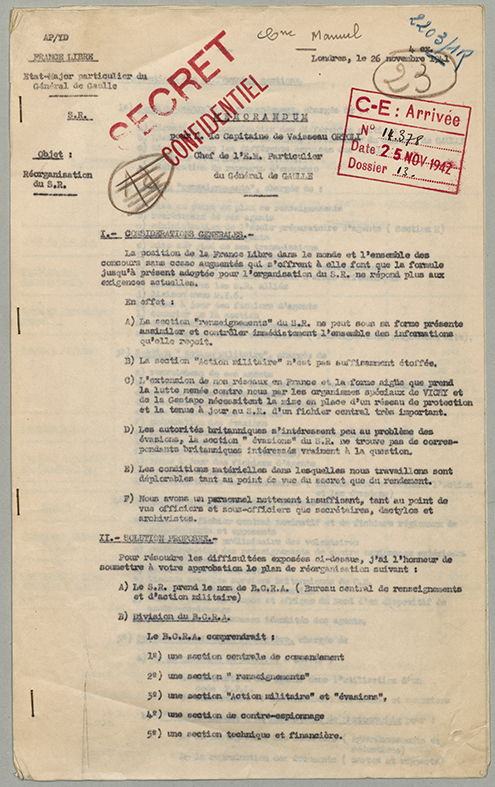
Memorandum sur la réorganisation du SR à Londres, 26 novembre 1941.
© SHD
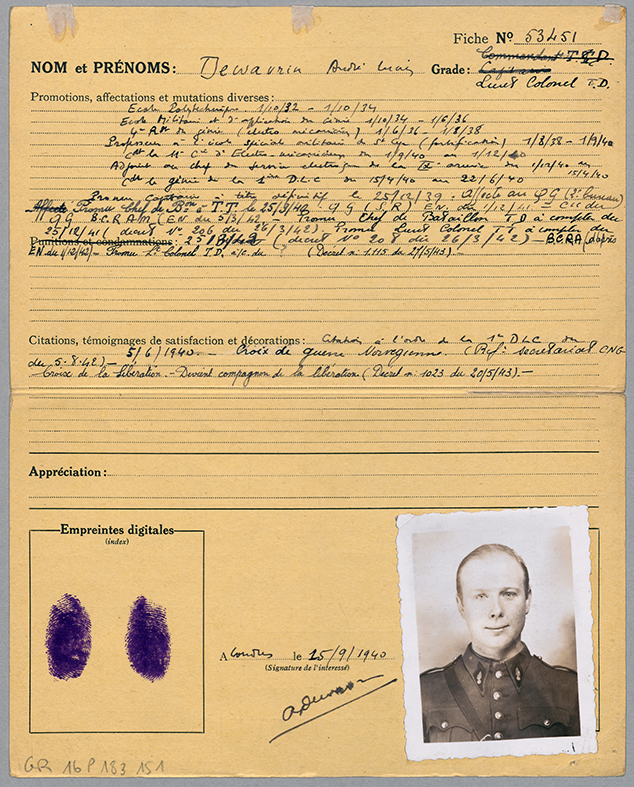
Fiche d'engagement d'André Dewavrin, recto.
© SHD
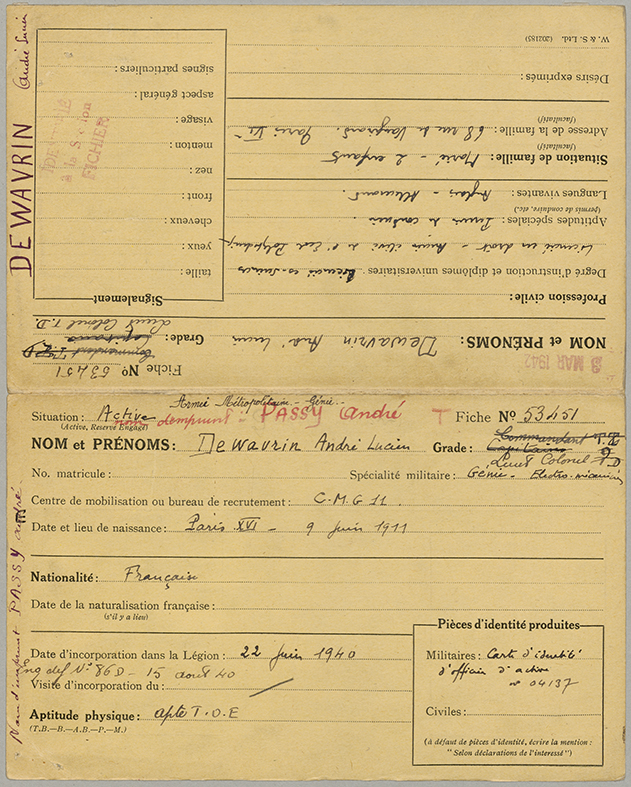
Fiche d'engagement d'André Dewavrin, verso.
© SHD
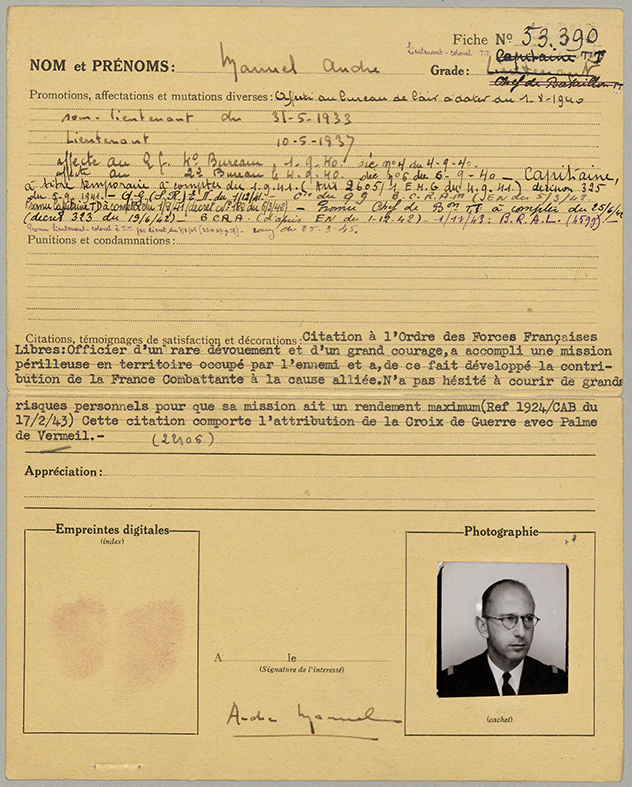
Fiche d'engagement d'André Manuel, recto.
© SHD
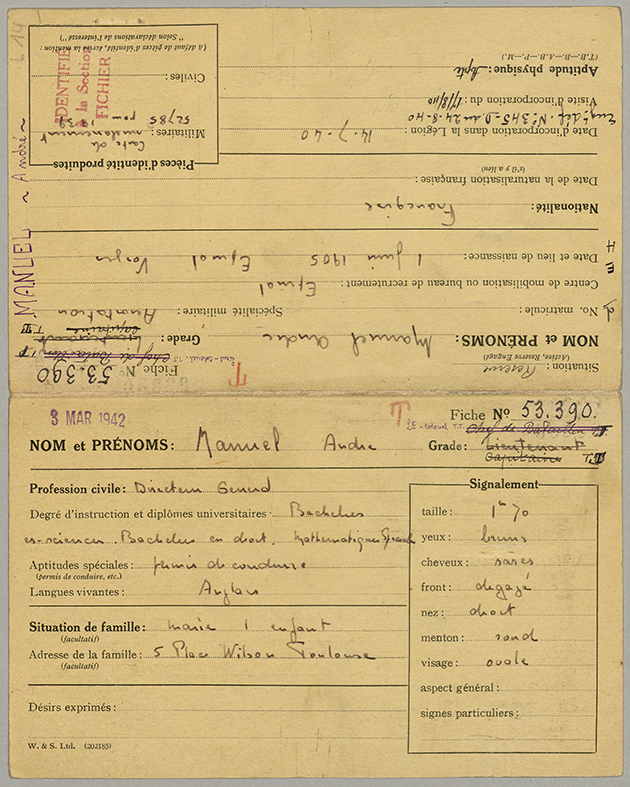
Fiche d'engagement d'André Manuel, verso.
© SHD
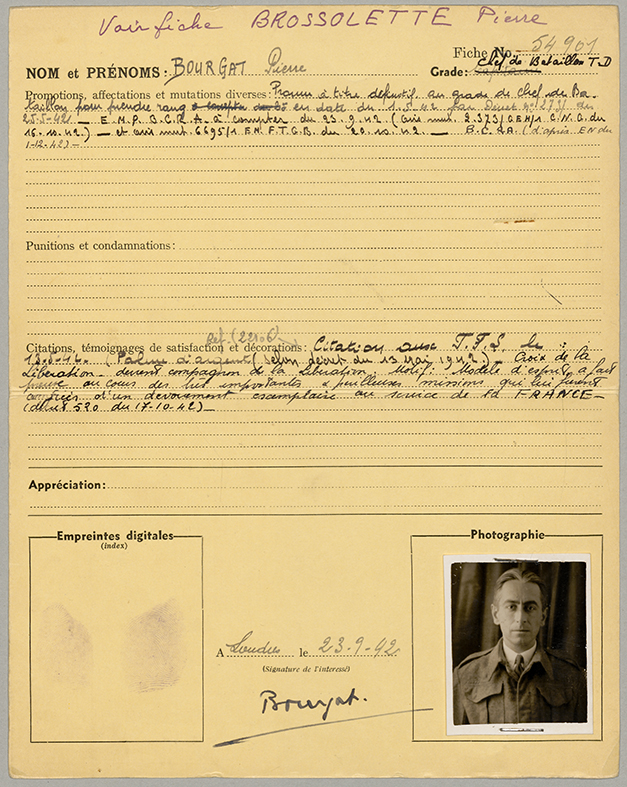
Fiche d'engagement de Pierre Brossolette 1, recto.
© SHD
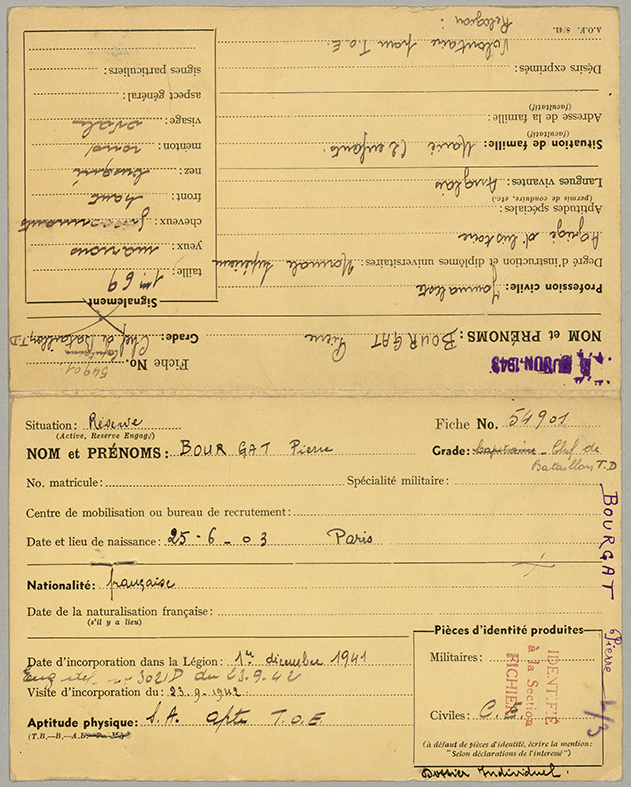
Fiche d'engagement de Pierre Brossolette 1, verso.
© SHD
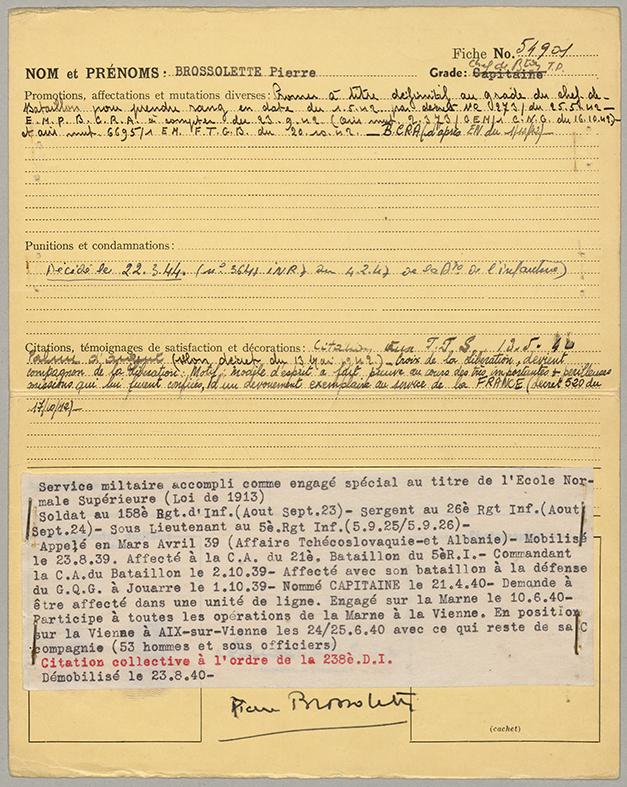
Fiche d'engagement de Pierre Brossolette 2, recto.
© SHD
